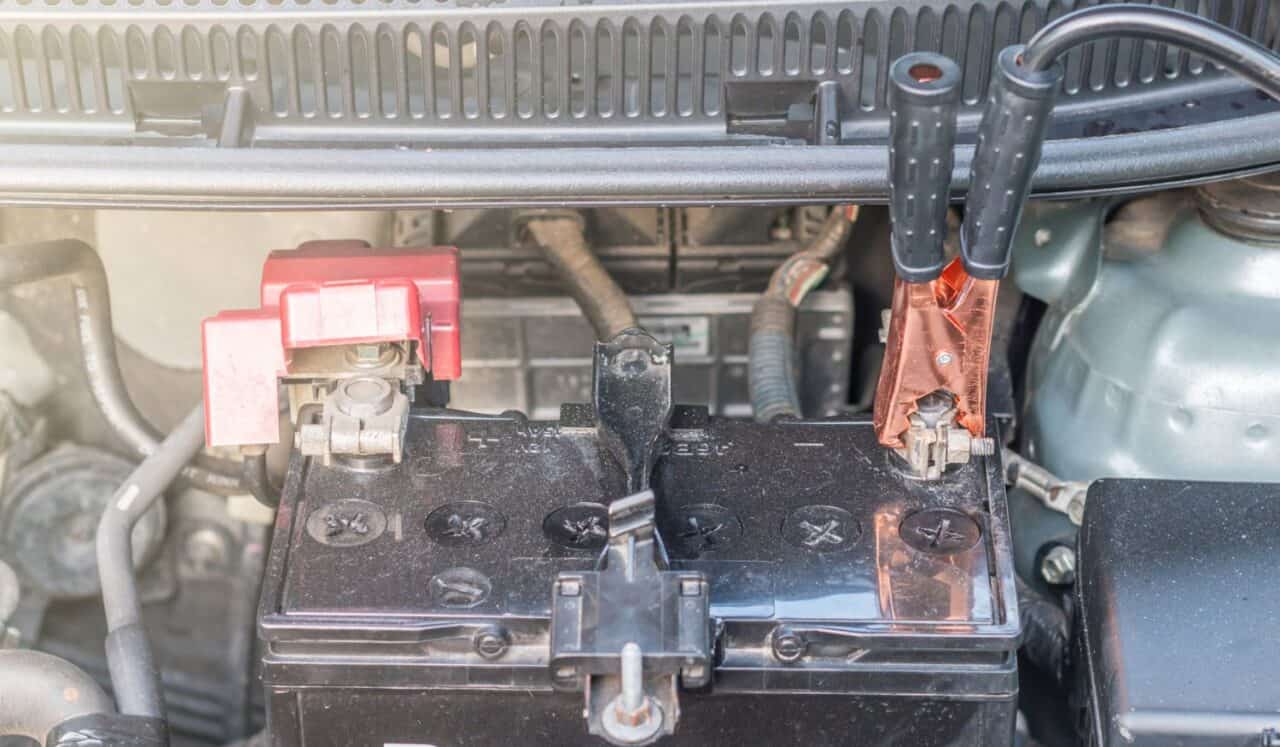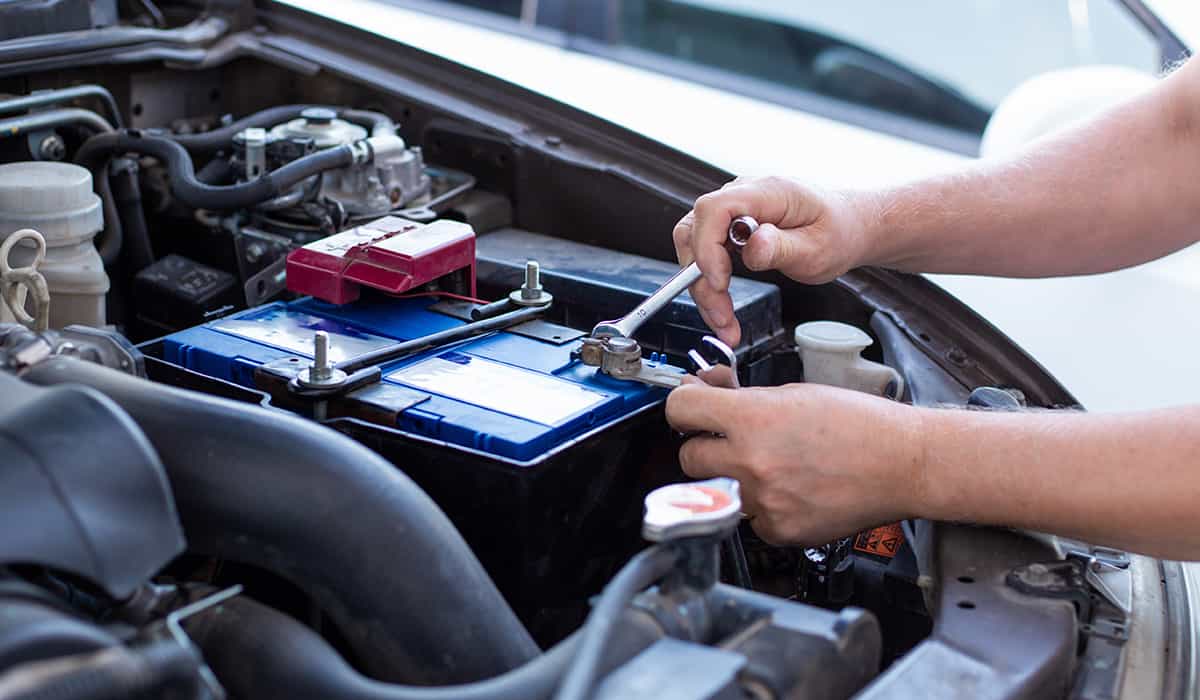Car Battery Terminal Grease – Do you need it?
As a car owner, you want to do everything possible to protect the battery even without realizing it, like turning off the headlights as soon as you can see clearly. You also want to get rid of corrosion on the terminals. So, do you need grease for your car battery terminals?

Yes, you should put grease on your battery terminals to prevent them from corroding, which would impair the electrical connection. It also keeps away dirt and moisture, because grease is hydrophobic. While applying grease is optional, failing to do so makes your battery more vulnerable to corrosion.
Corrosion on your battery terminals can inhibit current flow to and from the battery, making it difficult or impossible to start the car. Therefore, the best solution is to clean and grease the terminals to extend the battery’s service life. Let’s explore everything in detail.
Recommended Reading: AAA Car Battery Review, Are They Any Good?
What is a Battery Terminal?
A battery terminal is simply the electrical contact to your car battery, from where you draw power to your car.
Notably, these terminals come in a variety of shapes and sizes, and the most common ones in cars are the SAE Post and JIS terminals.
SAE terminals are the most common in car batteries and look like a cone with the top cut off. The positive post is usually larger in diameter than the negative one for easy identification.
JIS terminals also look like truncated cones but are relatively smaller than SAE posts.
Notably, terminals also come in different configurations, but the most common ones have the posts on the corners of the battery.
You can tell which side is positive because it has a plus sign (+), while the negative side has a minus sign (-) on it.
Moreover, the cable going to the positive terminal is usually color-coded red, while its negative counterpart is black in color.
The terminals can also be diagonally opposed or on the short or long side of the battery. You should purchase the right configuration so the cables can reach the terminals easily.
Should You Put Grease on Battery Terminals?
You should put grease on your battery terminals to protect them against corrosion, keep away moisture, and improve the electrical connection.
While the battery will work either way even if you don’t grease the terminals, they’ll be more vulnerable to corrosion.
Corrosion usually occurs if the battery overcharges, causing the temperature of the electrolyte (conductive liquid inside) to expand.
As pressure builds up, the electrolyte escapes through any vents it finds and ends up reacting with the battery terminals.
Cold and humid climates also increase the chances of oxidation and corrosion of battery terminals. So, if you live in such a place, be sure to protect your battery terminals by greasing them.

What Kind of Grease is Best for Car Batteries?
The best grease for your car battery terminals is silicone-based, like the Permatex 22058 Dielectric Tune-Up grease (on Amazon).
Silicone grease is non-conductive and will shield your terminals from rust, corrosive products, and debris.
It can also withstand a wide range of extreme temperatures, from -40 F (-40 C) to 400℉ (204 C).
Unlike most petroleum-based automotive grease, it can withstand high temperatures under the hood and won’t liquefy in the summer heat.
Silicone grease exhibits remarkable insulating properties, which could make you wonder why it’s used on battery terminals in the first place.
But you only apply it to the terminals once you’ve attached the clamps, meaning the electrical connection isn’t compromised.
Moreover, when you tighten the clamps, most of the grease gets squeezed out, and only a small amount fills the micro gaps to keep away air and moisture.
A great alternative to silicone grease would be lithium grease, like CRC White Lithium Grease (on Amazon). It’s an all-purpose lubricant that can also withstand extreme temperatures and offer reliable protection against corrosion.
Since white lithium grease is a dry lubricant, you might have to reapply it regularly for it to be effective.

What Grease Should Not Be Used on Car Batteries?
The kind of grease you shouldn’t use on car battery terminals includes:
PTFE Grease
Teflon grease is not electrically conductive but has a very high penetration ability.
And due to its non-stick properties, it may not offer reliable protection for the terminals. It’s best for use on chains and steel cables, not battery terminals.
Wax-Based Grease
Wax-based grease is highly viscous and can stay on metallic surfaces for longer, but it’s not recommended for battery terminals.
It has a lower operating temperature range, from -30 to 130 C (-22 F to 266 F). It’s best suited for applications where metallic parts keep moving and rubbing against each other.
Oil-Based Grease
Experts don’t recommend oil-based greases because they can easily melt in the summer and in the high temperatures under the hood.
This means they’ll flow easily and cover the space between the clamps and terminals, compromising the electrical connection.
Even if they don’t insulate the terminals, you’d spend a lot of money buying them too frequently.
Petroleum jelly
Petroleum jelly (which you might know by the brand name Vaseline) is the last thing you want to use on your car battery terminals.
It can only withstand temperatures below 40 C, or else it will melt and become useless. And in its molten state, it can easily ignite when heated enough.
This makes it unsuitable for use on battery terminals where sparking and arcing can be common.
Above all, petroleum jelly products like Vaseline aren’t recommended as a lubricant, so don’t use it on your battery terminals.
What Happens if You Don’t Grease Battery Terminals?
Greasing your battery terminals is entirely optional, but failing to do so will result in corrosion and damage to the battery.
Rusty or corroded battery terminals will drain your battery quickly, forcing it to be recharged too often.
And with multiple charge-discharge cycles, the battery’s performance will deteriorate, ultimately leading to a short service life.
You want to clean and grease your battery terminals at least twice a year to remove any corrosion buildup.
Not only will it help extend the battery life, but it also makes you start your car without a hitch every time.
How to Grease Battery Terminals
To grease your battery terminals, you must clean them first.
You need a heavy-duty car wash cleaner that can neutralize acidic contaminants and prevent further corrosion of the terminals. Alternatively, you can use baking soda and distilled water.
Moreover, you need steel wool or a wire brush to scrub away any stubborn traces of corrosive buildup and rust.
You can find special brushes from an auto parts shop designed for this job.
Follow these steps to clean and grease your battery terminals:
Step 1: Clean the Battery Compartment
Carefully remove dirt and contaminants from the battery compartment, then inspect the battery closely for any signs of corrosion.
If you notice any green or white crusty material on and around the terminals, it’s time for a thorough cleaning.
Step 2: Remove the Clamps From the Terminals
Unscrew the clamps that connect the cables to your terminals and gently lift them out, starting with the one on the negative post.
The clamps may be a little difficult to remove, especially if heavy corrosion surrounds them. In that case, remove them carefully with pliers.
You’ll now have a clear view of the terminals and the surface around them. Use a wire bristle brush to remove dirt and corrosion buildup from the clamps.
Note: Removing the clamps disconnects the power, and this can potentially erase the settings on your vehicle’s computer.
Step 3: Clean the Terminals
Apply a reasonable amount of the car wash cleaner to the terminals and let it sit for about three minutes.
Alternatively, mix baking soda with distilled water into a thick paste and apply it to the terminals. It will break down grime and corrosive build up.
Use a wire brush or hard bristle toothbrush to scrub off the corrosive buildup from the battery posts.
Rinse the terminals with distilled water, being careful not to wash the soap or baking soda paste into the battery vents. It could neutralize the battery acid and shorten the battery’s life.
Wipe the terminals and the battery surface with a damp rug, then dry them completely with a clean microfiber cloth.
Step 4: Replace the Clamps
Reattach the clamps back to the battery terminals, starting with the one going to the positive terminal. Once it’s firmly in place, attach the negative clamp and bolt it securely in place.
Experts usually recommend you install a pair of felt washers at the bases of the terminals.
They aim to prevent high-resistance shorts across the battery case, which could otherwise shorten its service life.
Step 5: Grease Up the Terminals

Apply a reasonable amount of dielectric grease to the battery terminals and spread it evenly around them and the cable clamps.
This will repel moisture and dirt to protect the terminals against future corrosion.
But if you apply too much grease, it can insulate the terminal-clamp connection and block current flow.
Remember, excess grease will flow out when you tighten the clamps, and it could impair the electrical connection between the connectors.
That’s why you must re-attach the clamps before applying grease. Once you’ve tightened the clamps, replace the rubber or plastic shields that cover the clamp-terminal junction.
Related Reading on Car Batteries:
- Are AAA Batteries Good?
- Car Battery Maintenance: Is Grease Needed for the Terminals?
- Car Battery Maintenance: Can You Use Electrical Tape?
- 6 Steps To Safely Clean Up Car Battery Acid
- Can A Short Circuit Damage A Car Battery? And How To Prevent It
- Do You Need A Costco Membership To Buy A Car Battery?
- 5 Steps To Safely Clean A Corroded Car Battery
- Are Car Battery Indicators Reliable?

As soon as I started reading this, I started questioning my lifelong use of Vaseline…. On my battery terminals. Time to change my strategy.